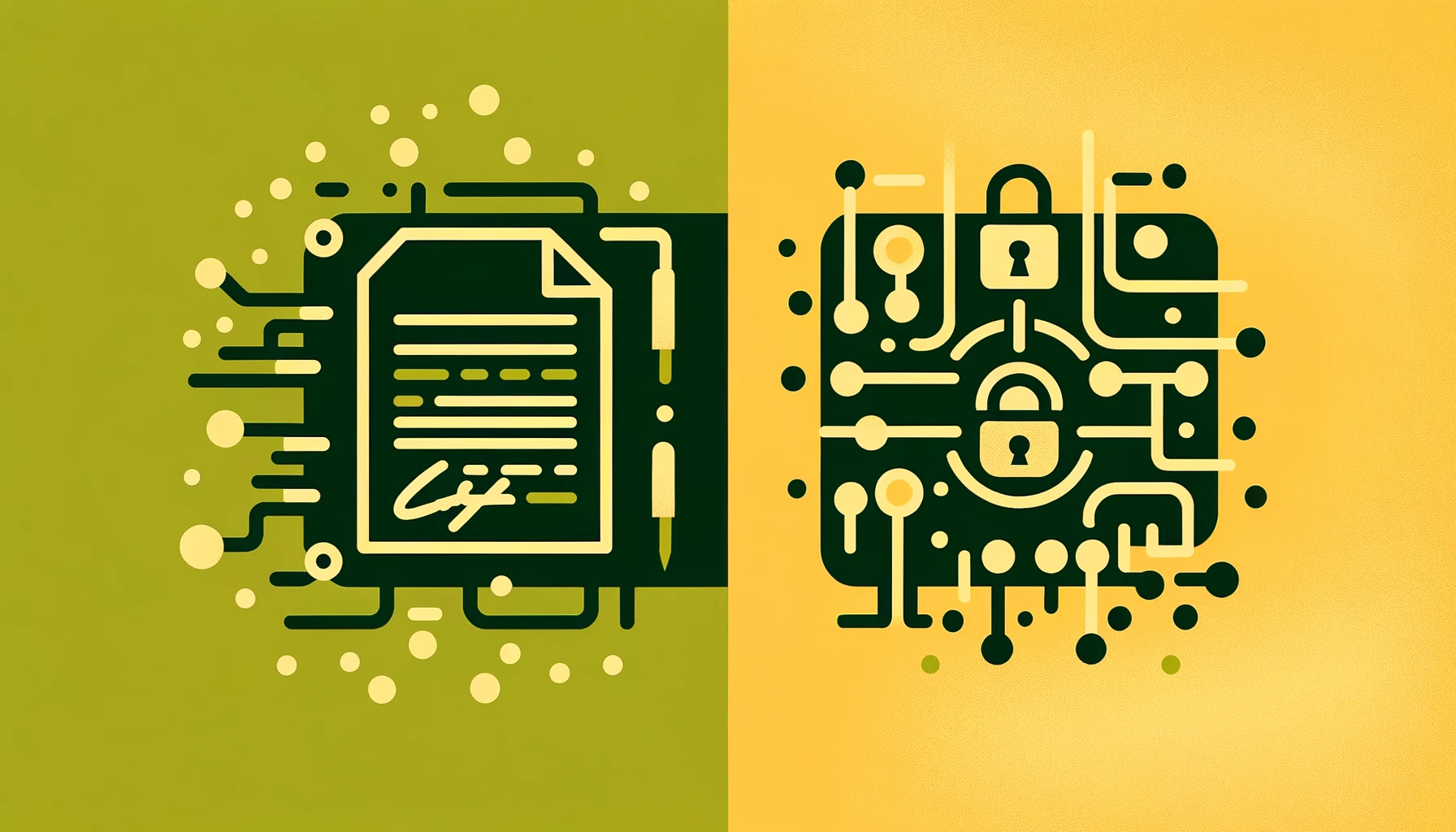
What is an Electronic Signature?
An electronic signature, or e-signature, is a broad term that encompasses any electronic means of indicating agreement or approval on a document. It can be as simple as typing your name at the end of an email, clicking an “I agree” checkbox, or using a stylus to draw your signature on a touchscreen device. Electronic signatures are legally binding in many countries, provided they meet specific requirements, such as demonstrating the signer’s intent and being associated with the signed document.
Common uses of electronic signatures include:
-
Signing contracts and agreements
-
Approving purchase orders and invoices
-
Onboarding new employees
-
Completing application forms
What is a Digital Signature?
A digital signature is a specific electronic signature that uses cryptographic techniques to enhance security and authenticity. It relies on a mathematical algorithm to generate a unique digital fingerprint, called a hash, for each document. This hash is then encrypted using the signer’s private key, creating the digital signature. The signature is attached to the document, and the recipient can verify its authenticity using the signer’s public key.
Common applications of digital signatures include:
-
Secure financial transactions
-
Legal contracts and agreements
-
Sensitive government documents
-
Medical records and prescriptions
Digital signatures offer several key security features:
-
Integrity: Any changes made to the document after signing invalidate the signature, ensuring the document’s integrity.
-
Authentication: The signer’s identity is verified using their digital certificate, preventing impersonation.
-
Non-repudiation: The signer cannot deny having signed the document, as their private key is required for creating the signature.
Key Differences between Electronic and Digital Signatures
-
Security levels: Digital signatures provide a higher level of security compared to basic electronic signatures. They use encryption and digital certificates to ensure the integrity and authenticity of the signed document, making them more difficult to forge or tamper with.
-
Authentication methods: Electronic signatures rely on various authentication methods, such as email verification, IP address tracking, or two-factor authentication. In contrast, digital signatures use digital certificates issued by trusted third-party Certificate Authorities (CAs) such as SSL.com to verify the signer’s identity.
-
Integrity verification: Digital signatures incorporate a unique hash of the document, which allows recipients to detect any changes made after the document was signed. Basic electronic signatures do not have built-in mechanisms for verifying document integrity.
-
Non-repudiation: Digital signatures provide non-repudiation, meaning the signer cannot deny having signed the document, as their private key is required for creating the signature. Electronic signatures may not always offer this level of non-repudiation, depending on the authentication methods used.
-
Use cases and suitability: Electronic signatures are suitable for a wide range of everyday business transactions and agreements where a basic level of authentication is sufficient. Digital signatures are preferred for high-value, sensitive, or legally critical documents that require the highest levels of security and non-repudiation.
Legal and Regulatory Considerations
The legal validity of electronic and digital signatures varies across jurisdictions and industries. Many countries have enacted laws and regulations, such as the ESIGN Act and UETA in the United States, and eIDAS in the European Union, which grant legal recognition to electronic signatures, provided they meet certain requirements.
However, some industries, such as healthcare and government, may have specific compliance requirements that mandate the use of digital signatures or other advanced authentication methods. It is essential to understand the legal and regulatory landscape in your jurisdiction and industry to ensure compliance when using electronic or digital signatures.
Choosing the Right Signature Solution
When selecting an electronic or digital signature solution, consider the following factors:
-
Security requirements: Assess the sensitivity and criticality of the documents you need to sign and choose a solution that offers the appropriate level of security.
-
Ease of use: Look for a user-friendly platform that seamlessly integrates with your existing workflows and systems, making it easy for signers to adopt and use.
-
Cost: Evaluate the pricing models of different solutions, considering factors such as the number of users, document volume, and additional features offered.
Popular electronic and digital signature platform like eSigner.com offer a range of features, integrations, and compliance certifications to suit various business needs.
As a leading provider of digital certificates and PKI solutions, SSL.com understands the importance of secure and reliable digital signatures. If your team is unsure of which digital signature solution is right, get in touch with SSL.com.


